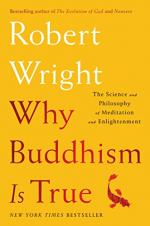
|
| Name: _________________________ | Period: ___________________ |
This quiz consists of 5 multiple choice and 5 short answer questions through Chapters 10-12.
Multiple Choice Questions
1. In an experiment, male respondents in rooms with women were more likely to rate what as an important goal?
(a) Wealth acquisition.
(b) Survival.
(c) Attractiveness.
(d) Career.
2. The author states that even perceptual judgments are a layer of meaning imposed onto what?
(a) Perception.
(b) Oneself.
(c) The outside world.
(d) Inquiry.
3. The author states that one must simply attempt to move toward not-self through performing what action?
(a) Creating.
(b) Believing.
(c) Meditating.
(d) Forgiving.
4. Though the author admits that there are paradoxes within Buddhism, he says that there are also paradoxes within which branch of science?
(a) Forensics.
(b) Physics.
(c) Geology.
(d) Biology.
5. The author states that what elements are just tools to help the brain sort the importance of various thoughts?
(a) Modules.
(b) Sounds.
(c) Feelings.
(d) Senses.
Short Answer Questions
1. What is the English translation of the title of the Buddhist text called the Satipatthana Sutta?
2. What system within the body is responsible for rewards?
3. What is the meaning of the term metta?
4. The author states that people often impose beliefs and structure onto various what?
5. Within what situation should one practice the RAIN technique, according to the author?
|
This section contains 220 words (approx. 1 page at 300 words per page) |

|




